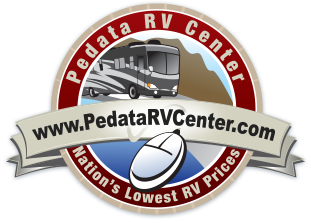Here is a basic list or quick dictionary of common RVing terms for those who drive motorhomes or RVs. These terms are a reference for all RVers. The words and RVing terms are listed below in alphabetical order for RVer convenience in finding the info they need as they travel or prepare for their next RV road trip. The RV lifestyle is easily accessible, but the transition is smoother with just a little preparation.
A
A Class or Class A RV: This refers to recreational vehicles built on a truck chassis, an A Class or Class A motorhome is a large, long vehicle typically equipped with a cab, living quarters, kitchen and bathroom.
Awnings: Extensions of canvas or faux canvas that give shade to space beside the recreational vehicle so the RVer can set up chairs or a picnic table under shade. Some awnings have side enclosures as well. RV awnings bring some of the comforts of the RV outdoors.
B
Berth: A berth is a place in the motorhome with built-in beds for sleeping.
Butane: A hot and clean-burning fuel, some RV appliances run on butane fuel.
C
Campervan: Small and economical, campervans are usually smaller than motorhomes, but they have room for a fold out bed as well as cooking facilities and offer low maintenance costs and increased accessibility for RVers who prefer more remote RV campsites.
Cassette Toilet: Self-contained, a cassette toilet comes with a removable tank for easy emptying. Some RVers prefer this style.
D
Dinette: The dinette is the compact table and chairs (or benches) in motorhomes. They are usually built-in. Diesel: Some engines are built to use diesel, a type of fuel. Many refer to these RVs as Diesel pushers.
E
F
Fixed Bed: A built-in feature, a fixed bed does not need folding and storing during the day.
Fly Screen: A mesh screen that fits a window frame, a fly screen, covers a window and lets fresh air in while keeping flies and other insects outside. G Gas Test: A required test, the testing for gas leaks is required for most hired recreational vehicles.
H
Handover: In order to prepare the RVers (no matter what their level of previous experience) to safely and properly handle and maintain the recreational vehicle, a handover refers to the instructions given before the hired motorhome is released and the keys are handed over to the person or persons renting or buying it.
Hook-up: The hook-up is the connecting of the motorhome with a source of electricity.
I
Inverter: An inverter transforms DC or 12 volt electric currency to AC or 240 volt.
J
Journey: The journey is the action of transporting passengers from the starting point to the destination.
K
L
M
Maximum Mass: The heaviest possible weight permitted for the RV is the maximum mass.
N
O
Overcab Bed: The overcab bed is built-in over the cab of the vehicle.
P
Propane: Propane is the fuel usually stored in tanks that most motorhomes use for heat and other appliances.
Q
R
S
Storage: The motorhome goes into storage during time when it is not in use, especially during cold weather.
T
Tracker: The tracker is a device secured on recreational vehicles so that the vehicles can be tracked by satellite. A safety measure, this device helps recover stolen RVs.
U
Unlaiden Weight: The unlaiden weight is how much the motorhome weighs before loading.
V
Vacation: The term “vacation” refers to a holiday. The word “vacation” is commonly used in the United States.
W
Wohnmobil: The term used by Germans, Wohnmobil refers to a motorhome. Winterized: The term “winterized” deals with preparing the vehicle for cold weather. Usually, the term refers to preparation specifically related to the water tank, walls and windows of the RV.
X
X Roads: A term used on signage, “X roads” means crossroads or an intersection.
Y
Z
Zig Unit: For lighting as well as for water pumps and other leisure battery uses, the zig unit provides 12-Volt electric power in the motorhome when connected.











